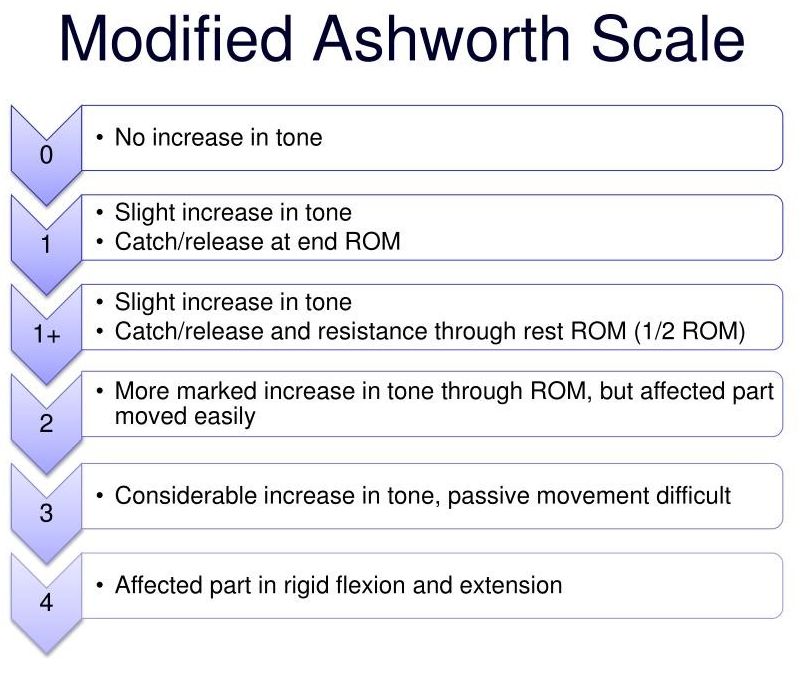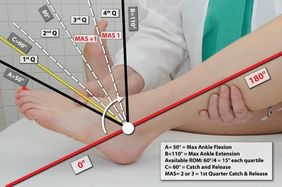The Modified Ashworth Scale is a common tool for assessing spasticity in patients with cerebral palsy and other conditions accompanied by increased muscle tone. The original Ashworth scale was proposed in 1964, and a Modified scale - in 1987. The scale aims to assess the degree of the muscle resistance to passive movement in the joint with varying velocity.
No special equipment is required for the examination, but special attention should be paid to the position of the assessed limb. When examining the flexor muscles, the limb should be in the position of maximal flexion, then within 1 second it should be moved to the position of maximal extension. When examining the extensor muscles, the limb should be in the in the position of maximal extension, then within 1 second it should be moved to the position of maximal flexion.

Evaluation of test results is performed on a 5-point scale in the range from 0 - indicating no increase in tone, to 4 - which means that the limb is rigid in flexion or extension. To increase the sensitivity in the lower spectrum of measurements to the modified Ashworth scale was added category 1+, which means the presence of resistance for less than half of the amplitude of movement.
Modified Ashworth Scale for Grading Spasticity
Score | Modified Ashworth Scale |
0 | No increase in muscle tone |
1 | Slight increase in muscle tone, manifested by a catch and release (tone normalization) or by minimal resistance at the end of the range of motion when the affected part(s) is moved in flexion or extension. Catch is a sudden slight increase in a muscle tone at any point during the range of motion (ROM) in the joint |
1+ | Slight increase in muscle tone, manifested by a catch (without release), followed by minimal resistance throughout the remainder (less than half) of the ROM |
2 | More marked increase in muscle tone through most of the ROM, but affect part(s) easily moved |
3 | Considerable increase in muscle tone passive, movement difficult |
4 | Affected part(s) rigid in flexion or extension |
More information about the reliability and validity of the scale, as well as a bibliography can be found here.
You can watch short training video in English here.

